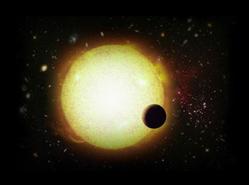Created by Tim Castellano, an astronomer from NASA Ames Research Center, and Greg Laughlin, an assistant professor of astronomy at the University of California, Santa Cruz, Transit Search is searching for members of the astronomy community to lend a hand.
The website provides participants with stellar coordinates, potential transit times, reports, and equipment information. Then, using a technique called “transit photometry,” amateurs will zero in and take a night’s worth of photographs of a potential transited star and its surrounding stars. With these CCD images and specialized software, astronomers will examine for slight dimming, which indicates a planet’s transit. Further analysis will also assist astronomers in determining the planet’s size, reveal atmospheric composition, or even the presence of rings or orbiting moons.
Those in the Northern Hemisphere hoping to capture a transit will have a slight possibility of doing so on October 30 by observing HD 68898, located near the Big Dipper. On this night, a planet HD68898 b, has an 8 percent chance of transiting its star. A successful observation would also confirm the existence of a jovian-sized planet outside of our solar system.
HD 68988 is just one of many opportunities observers will have to assist Transit Search. Future campaigns include HD217107, HD195019, HD37124, HD38529, GJ 876, and, specifically for Southern Hemisphere-based astronomers, HD76700. As far as experienced participants, Castellano and Laughlin follow the adage of “the more, the merrier.”
“Having observers in various locales around the world will provide 24-hour availability and reduce the dependence on local weather,” explains Laughlin. “The signature of a planetary transit is very subtle, so multiple simultaneous observations provide a vitally needed redundancy.”
Those wishing to assist will need a telescope (Transit Search uses a 8-inch Meade LX200), CCD camera, personal computer, and software that will log and analyze the shifts in stellar brightness caused by a planet transiting. Castellano and Laughlin also recommend that participants have previous experience in measuring the brightness of variable stars or in observing the known transit of HD209458 with a CCD camera.










